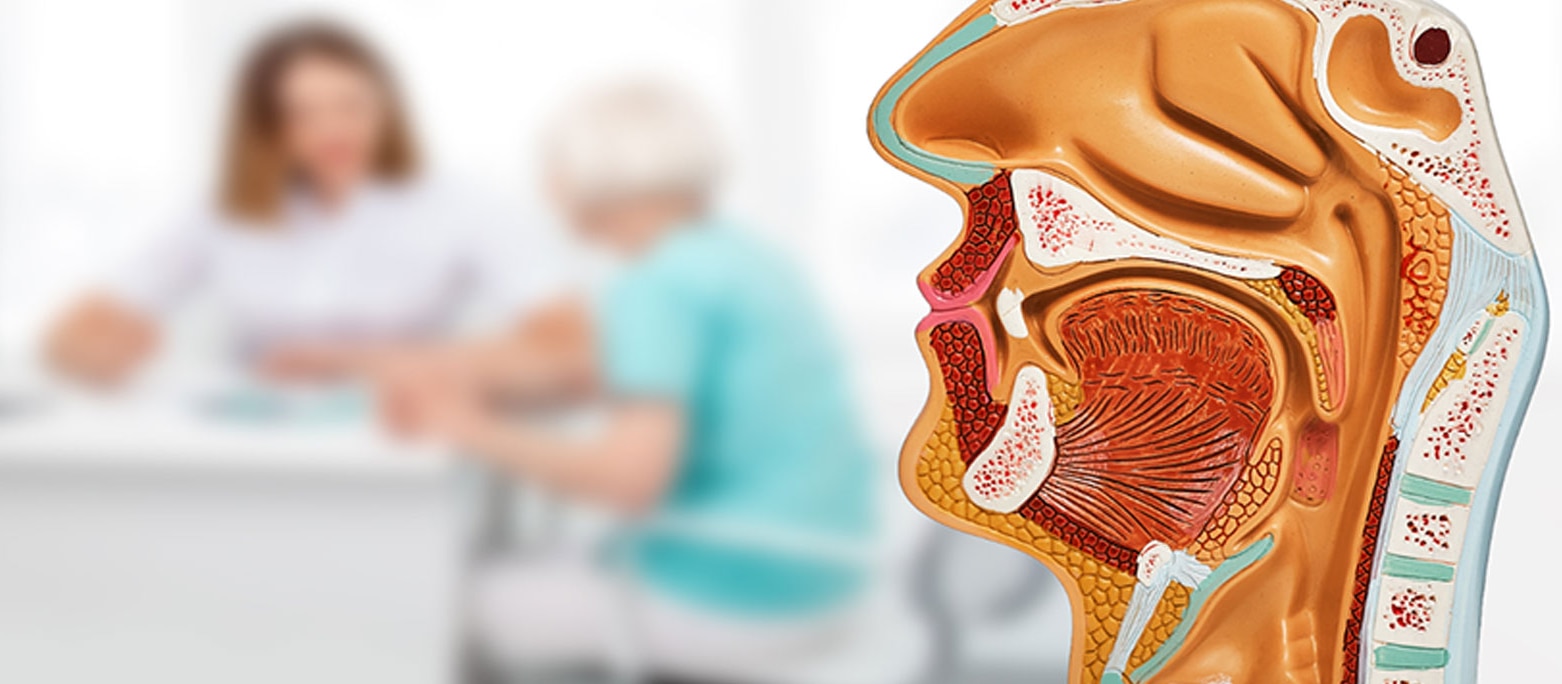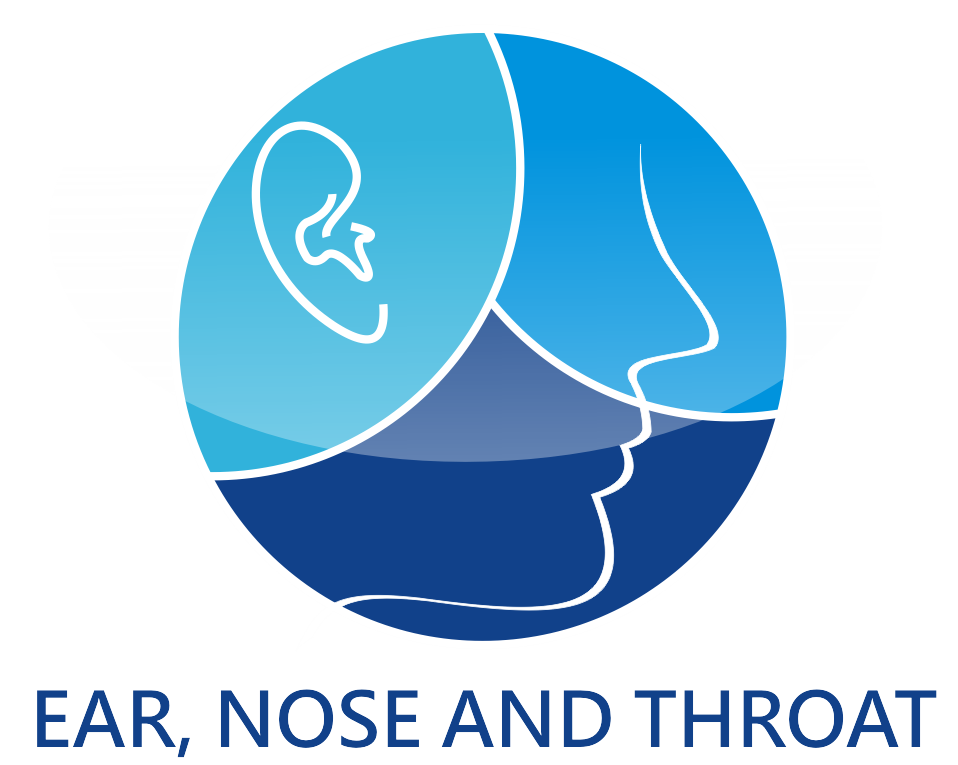Throat Cancer
Throat CancerThroat cancer refers to cancer that develops in the throat (pharynx), voice box (larynx), or tonsils. It can affect various areas of the throat, including the nasopharynx (upper part of the throat), oropharynx (middle part), hypopharynx (lower part), or the larynx (voice box). Throat cancer can involve different types of cancer, such as squamous cell carcinoma, which is the most common form, affecting the flat cells that line the throat.Types of Throat CancerLaryngeal Cancer (Voice Box Cancer):Cancer that develops in the larynx, which includes the vocal cords.Symptoms often include hoarseness, difficulty swallowing, and a persistent cough.Pharyngeal Cancer (Throat Cancer):Cancer affecting the pharynx, which is the tube that connects the nose and mouth to the esophagus.It can be subdivided into:Nasopharyngeal Cancer: Cancer in the upper part of the throat, behind the nose.Oropharyngeal Cancer: Cancer in the middle part of the throat, including the tonsils and the soft palate.Hypopharyngeal Cancer: Cancer in the lower part of the throat near the esophagus.Tonsil Cancer:Cancer that develops in the tonsils, which are located at the back of the throat.Often a type of oropharyngeal cancer.Esophageal Cancer (near the throat):Cancer that affects the esophagus, the tube connecting the throat to the stomach. This can sometimes be associated with throat cancer.Symptoms of Throat CancerThe symptoms of throat cancer depend on the location of the tumor but commonly include:Persistent hoarseness or changes in voice.Difficulty swallowing (dysphagia).A lump or mass in the neck or throat.Chronic sore throat or cough.Pain when swallowing or speaking.Unexplained weight loss.Ear pain or a feeling of fullness in the ear.Persistent bad breath (halitosis).Blood in the saliva or phlegm.Shortness of breath (in advanced cases).Risk FactorsSeveral factors increase the risk of developing throat cancer, including:Tobacco Use: Smoking cigarettes, cigars, or pipes, and using smokeless tobacco significantly increase the risk.Excessive Alcohol Consumption: Drinking alcohol heavily or frequently increases the likelihood of throat cancer, especially when combined with smoking.Human Papillomavirus (HPV) Infection: Infection with high-risk strains of HPV, particularly HPV-16, is a major cause of oropharyngeal cancer.Age: Most people diagnosed with throat cancer are over the age of 50.Gender: Men are more likely than women to develop throat cancer.Diet: A diet low in fruits and vegetables can increase the risk.Family History: A family history of head and neck cancers may increase risk.Exposure to Asbestos or Chemicals: Certain chemicals, such as asbestos and other industrial chemicals, may increase the risk of throat cancer.Weakened Immune System: People with weakened immune systems, such as those with HIV or who are undergoing immunosuppressive therapy, have a higher risk.Diagnosis of Throat CancerThroat cancer is diagnosed through a combination of medical history, physical examination, and tests, which may include:Physical Examination:The doctor will examine the mouth, throat, and neck for signs of abnormal growths or swelling.Endoscopy:A flexible tube with a camera (laryngoscope or endoscope) is inserted through the nose or mouth to examine the throat and take biopsies of any suspicious areas.Biopsy:A tissue sample is taken from a suspicious area and examined under a microscope to confirm the presence of cancer cells.Imaging Tests:CT Scan (Computed Tomography): Helps determine the size of the tumor and if it has spread to other areas.MRI (Magnetic Resonance Imaging): Provides detailed images of the soft tissues in the throat and surrounding areas.PET Scan (Positron Emission Tomography): Can help detect cancer spread to other parts of the body.X-rays: Sometimes used to detect tumors or masses.HPV Testing:In some cases, HPV tests are performed, especially if the cancer is in the oropharynx (tonsils, back of the throat).Treatment for Throat CancerTreatment options for throat cancer depend on the cancer's stage, location, and the patient's overall health. Common treatment methods include:Surgery:Tumor Resection: Removal of the cancerous tumor or part of the larynx or pharynx. In some cases, the entire larynx (voice box) may need to be removed (laryngectomy).Neck Dissection: Removal of lymph nodes in the neck if cancer has spread.Laser Surgery: A laser may be used to remove small tumors, especially in the early stages.Radiation Therapy:High-energy rays are used to kill cancer cells or shrink tumors. Radiation therapy is often used for smaller, localized cancers or after surgery to destroy remaining cancer cells.Can be combined with chemotherapy for more advanced cases.Chemotherapy:The use of drugs to kill cancer cells or stop their growth. It may be used in conjunction with radiation therapy for more advanced cancers or as a primary treatment for cancers that have spread.Chemotherapy can cause side effects like nausea, fatigue, and hair loss.Targeted Therapy:Uses drugs that specifically target cancer cells without affecting normal cells. Targeted therapies may be used for cancers that are resistant to traditional chemotherapy.Immunotherapy:Drugs that help the immune system recognize and attack cancer cells. Immunotherapy is a newer treatment option that may be used for certain types of throat cancer.Speech and Swallowing Therapy:After surgery, especially if the larynx is removed, speech and swallowing therapy may be necessary to help the patient regain the ability to speak and eat.
READ MORE



 +918048037768
+918048037768







